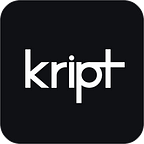Blockchain Use Cases: Virtual Reality
Blockchain is a cutting-edge technology that can be implemented in a variety of different fields and make our life better in many ways. Our Blockchain Use Cases heading is meant to study the ways blockchain can be applied and overview the projects implementing it in different fields.
The Virtual Reality (VR) industry is rapidly growing. According to statista.com, the market size of VR hardware and software was estimated at $2,2 billion in 2017 and is expected to increase to over $19 billion by 2020. Blockchain technology can be used as an essential component of VR projects providing higher level of security and reliability. Now let’s have a look at the most popular use cases of blockchain technology implementation in VR-based projects.
E-commerce
VR technology allows solving one of the biggest problems of e-commerce — the inability for customers to try on clothes and fully envision how they fit them. Online retailers, especially online clothing shops, are beginning to utilize the VR experience to provide their customers with better experience and sense of what an item looks like without having to go to a physical store. Implementation of blockchain technology for such e-commerce platforms can be very useful as it allows establishing and storing copyrights for digital objects in a reliable way. And with the growth of VR solutions popularity in e-commerce, the importance of protecting the rights will increase.
🔍 VIARIUM — decentralized VR architecture of shopping centers, showrooms and other VR models
Virtual worlds
VR-based virtual world is a new step in the gaming industry. They are gaining popularity with the development and growing availability of different VR devices giving a new gaming experience to users. Such worlds need increased digital safety as it’s essential for their value while there is a growing risk for digital objects to be hacked, copied or stolen. As VR experience becomes more mainstream in the gaming industry, blockchain implementation becomes more relevant due to creating more reliable background for projects of the kind and making these worlds more secure. Blockchain helps to verify virtual objects and protecting the rights for digital works of art or VR experience of a game. It also preserves VR users’ identities and establishes items ownership in virtual worlds.
🔍 Decentraland — a decentralized virtual world
Content marketplaces
Blockchain technologies can be successfully implemented in projects meant for VR content creation, distribution and monetization. Content distribution platforms allow users to create, upload, buy and sell different VR experiences ranging from gaming items to books, music, films, and beyond. Blockchain can be used to secure users’ rights for content and simplify its exchange and monetization with the use of cryptocurrencies. Besides, blockchain also allows for p2p interaction between the users, making it faster and cheaper for all the parties.
🔍 VibeHub — VR/AR marketplace and hub; ImmVRse — VR content-sharing platform
And some more examples of blockchain use cases in different VR-based projects:
🔍 Blockchain 3D Explorer — a multi-platform blockchain explorer for visualizing various blockchains in 3D models and VR
🔍 Telescopia — a live telescope streaming platform
🔍 GazeCoin — a universal tool for advertising in VR/AR content or worlds
🔍 Uhive — a social network
🔍 Terra Virtua — a VR entertainment platform
Content kript.ioShare with your friends if you enjoyed this postDownload Kript on AppStore and GooglePlayFollow us on Telegram, Facebook, Twitter
